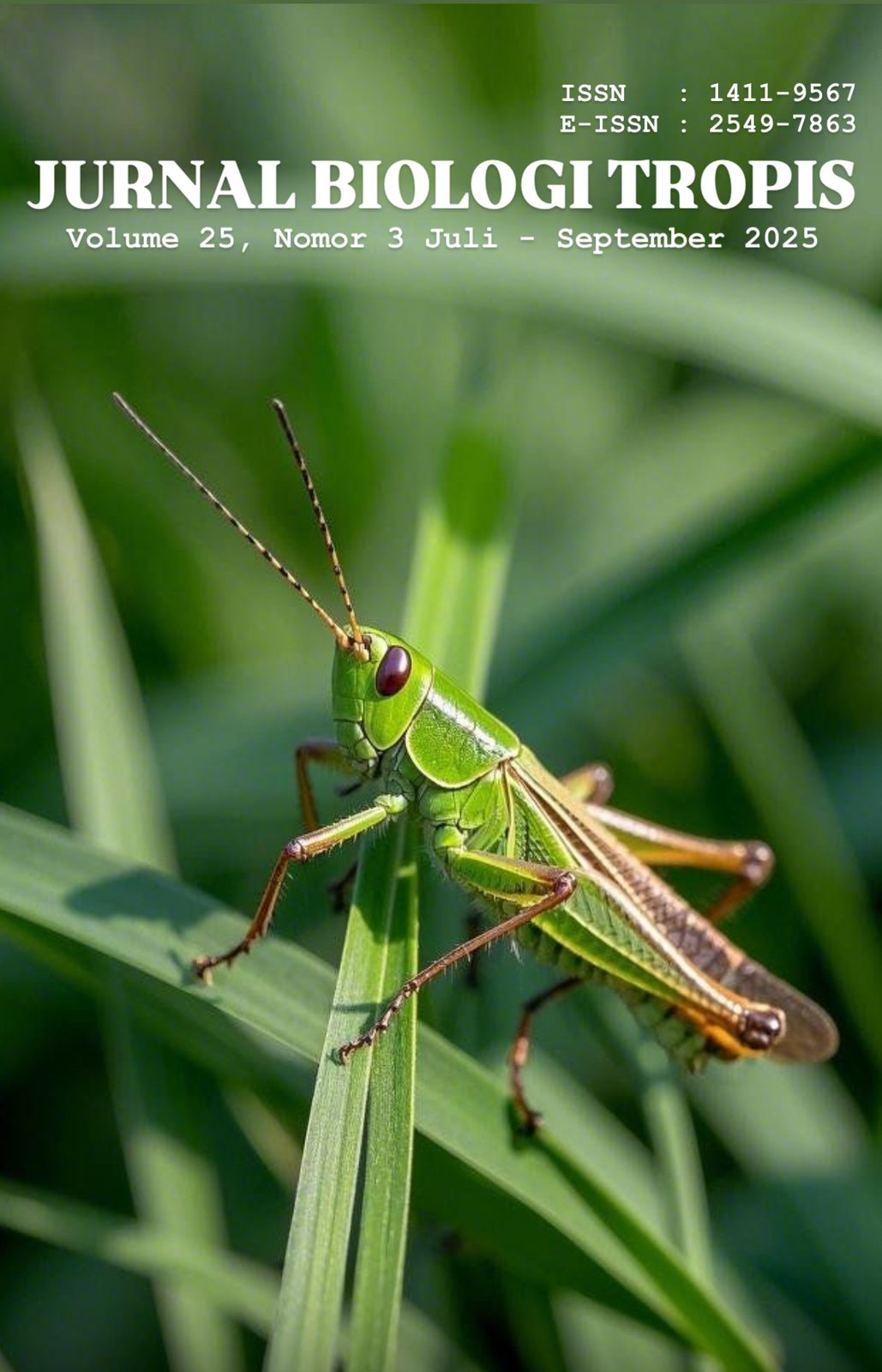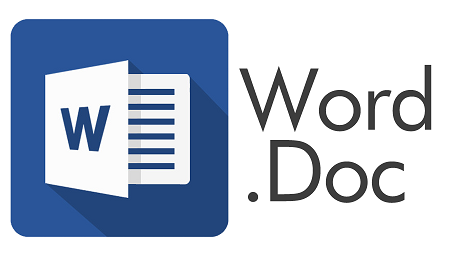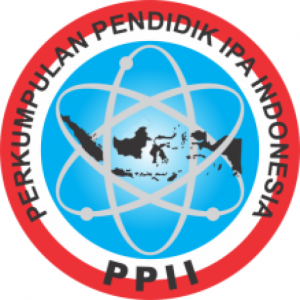Bio-Reclamation Evaluation of Former Gold Mine Land: Pre- and Post-Reclamation Soil Management Conditions
Authors
Muhammad Nuriman , Sigit Sapto Wibowo , Rezekikasari Rezekikasari , Leony Agustine , Tia SetiawatiDOI:
10.29303/jbt.v25i3.9519Published:
2025-07-03Issue:
Vol. 25 No. 3 (2025): Juli-SeptemberKeywords:
Heavy metals, soil management, soil quality, soil fertility, soil bioremediation.Articles
Downloads
How to Cite
Downloads
Metrics
Abstract
Former gold mining land, especially those abandoned without reclamation, experiences serious physical, chemical, and biological degradation, and is potentially contaminated with heavy metals such as mercury (Hg). This study aims to evaluate the effectiveness of organic farming-based bioreclamation and good soil management, using dwarf elephant grass (Pennisetum purpureum) and chicken manure in improving the condition of former gold mining land. The parameters analyzed include physical, chemical, and biological properties of the soil, as well as mercury levels in the soil and plants. The results showed that the soil quality index increased from 0.32 (low) to 0.62 (good). The organic C content increased from 0.91% to 2.16%, soil pH increased from 3.53 to 5.03, and the availability of phosphorus and potassium also increased. The population of methyl mercury-reducing bacteria increased 22.4 - 58.2 times, indicating improved microbial adaptation to the environment. Mercury content in plant tissue decreased drastically from 11.60 mg/kg to 0.11 mg/kg or a decrease of 99.05%, although still slightly exceeding the threshold. The conclusion is that reclamation with an organic approach and effective soil management not only improves soil fertility and quality, but also reduces the risk of heavy metal poisoning.
References
Bajracharya, R. M., Sharma, S., Dahal, B. M., Sitaula, B. K., Rokaya, K., & Jeng, A. (2006, October). Assessment of soil quality using physiochemical and biological indicators in a mid-hill watershed of Nepal. In Proceedings of Int’l. Seminar on Environmental and Social Impacts of Agricultural Intensification in Himalayan Watersheds (pp. 105-114).
Barkay, T., Miller, S. M., & Summers, A. O. (2003). Bacterial mercury resistance from atoms to ecosystems. FEMS microbiology reviews, 27(2-3), 355-384. https://doi.org/10.1016/S0168-6445(03)00046-9
Brady, N. C., & Weil, R. R. (1996). The nature and properties of soils.
Budhisurya, E., Anggono, R. C. W., & Simanjuntak, B. H. (2013). Analisis kesuburan tanah dengan indikator mikroorganisme tanah pada berbagai sistem penggunaan lahan di Plateau Dieng. Agric, 25(1), 64-72. https://doi.org/10.24246/agric.2013.v25.i1.p64-72
Chen, J., & Yang, Z. M. (2012). Mercury toxicity, molecular response and tolerance in higher plants. Biometals, 25, 847-857. 10.1007/s10534-012-9560-8
Dariah, A., Sutono, S., Nurida, N. L., Hartatik, W., & Pratiwi, E. (2015). Pembenah tanah untuk meningkatkan produktivitas lahan pertanian. Jurnal sumberdaya lahan, 9(2), 67-84. 10.2018/jsdl.v9i2.6571
Erfandi, D., (2017). Pengelolaan lansekap lahan bekas tambang: pemulihan lahan dengan pemanfaatan sumberdaya lokal (in-situ). Jurnal Sumberdaya Lahan, 11(2), pp.55-66. 10.21082/jsdl.v11n2.2017.55-66
Gadd, G.M., (2010). Metals, minerals and microbes: geomicrobiology and bioremediation. Microbiology, 156(3), pp.609-643. 10.1099/mic.0.037143-0
Ghimire, P., Bhatta, B., Pokhrel, B., & Shrestha, I. (2018). Assessment of soil quality for different land uses in the Chure region of Central Nepal. Journal of Agriculture and Natural Resources, 1(1), 32-42. 10.3126/janr.v1i1.22220
Gouda, S. A., & Taha, A. (2023). Biosorption of heavy metals as a new alternative method for wastewater treatment: a review. Egyptian Journal of Aquatic Biology and Fisheries, 27(2), 135-153. 10.21608/ejabf.2023.291671
Grigal, D. F. (2002). Inputs and outputs of mercury from terrestrial watersheds: a review. Environmental Reviews, 10(1), 1-39.
Hamzah, A., & Priyadarshini, R. (2019). Buku Remediasi tanah tercemar logam berat. UNITRI Press. Malang. Indonesia.
Harefa, D. F. C., & Zebua, M. (2024). Peran Kapasitas Tukar Kation Dalam Mempertahankan Kesuburan Tanah Pada Berbagai Jenis Tekstur Tanah. Jurnal Ilmu Pertanian dan Perikanan, 1(1), 165-170. https://doi.org/10.70134/penarik.v2i3.88
Henrianto, A., Okalia, D., & Mashadi, M. (2019). Uji beberapa sifat fisika tanah bekas tambang emas tanpa izin (PETI) di tiga kecamatan di daratan sepanjang Sungai Kuantan. Jurnal Agronomi Tanaman Tropika (Juatika), 1(1), 19-31. https://doi.org/10.36378/juatika.v1i1.41
Indriani, I., Abdillah, M. H., Putri, N. A., Said, M. R., Roby, R., & Santi, A. (2023). Pengaruh Perbandingan Dosis Pupuk Kandang Ternak Ayam dan Sapi Terhadap Biomassa Jagung dan Dinamika Kation Tanah. ZIRAA'AH MAJALAH ILMIAH PERTANIAN, 48(1), 13-20. http://dx.doi.org/10.31602/zmip.v48i1.9238
Isnaeni, I., Calvina, A. B., Ardiana, A. D., Azzahra, C. S., Santosa, N. R., Miladya, N. F., & Anwar, N. Z. (2024). Bioremediasi Cemaran Tanah Menggunakan Biostimulant. Camellia: Clinical, Pharmaceutical, Analytical and Pharmacy Community Journal, 3(2), 192-204. https://doi.org/10.62951/flora.v2i1.263
Laia, I. A., Gulo, E. A. K. D., Gulo, L. L., & Ndraha, A. B. (2025). Dampak Penerapan Pertanian Organik Terhadap Kualitas Tanah dan Hasil Pertanian Tanaman Padi Sawah di Kepulauan Nias. Flora: Jurnal Kajian Ilmu Pertanian dan Perkebunan, 2(1), 177-187.
Makawimbang, D., Karwur, H. M., & Kumaat, J. C. (2024). Dampak Penambangan Emas Terhadap Lingkungan dan Sosial Ekonomi di Desa Bowone Kepulauan Sangihe. Jurnal Episentrum, 5(3), 30-38. https://doi.org/10.36412/jepst.v5i3.3868.g1755
Nangaro, R. A., Zetly, E., & Titah, T. (2020). Analisis kandungan bahan organik tanah di kebun tradisional desa sereh kabupaten kepulauan talaud. In Cocos (Vol. 12, No. 4). https://doi.org/10.35791/cocos.v1i1.32111
Partoyo, P. (2005). Analisis Indeks Kualitas Tanah Pertanian Di Lahan Pasir Pantai Samas Yogyakarta (Analysis Of Soil Quality Index For Sand Dune Agriculture Land At Samas Yogyakarta). Ilmu Pertanian, 12(2), 140-151. https://doi.org/10.22146/ipas.58574
Patra, M., & Sharma, A. (2000). Mercury toxicity in plants. The botanical review, 66, 379-422. https://link.springer.com/article/10.1007/BF02868923
Pramaditya, D. A. (2022). Karakterisasi Sifat Fisik Dan Kimia Tanah Pada Lahan Bekas Tambang Batubara Yang Telah Direklamasi. Jurnal Mineral, Energi, dan Lingkungan, 6(2), 28-37. https://doi.org/10.31315/jmel.v6i2.8022
Pusat Penelitian Tanah. (1995). Kombinasi Beberapa Sifat Kimia Tanah dan Status Kesuburannya. E-jurnal Agroekoteknologi Tropikal. Vol 4: 2301-6515 hal.
Rahmi, A., & Biantary, M. P. (2014). Karakteristik sifat kimia tanah dan status kesuburan tanah lahan pekarangan dan lahan usaha tani beberapa kampung di Kabupaten Kutai Barat. Ziraa'ah Majalah Ilmiah Pertanian, 39(1), 30-36. 10.31602/zmip.v39i1.33
Romadhan, P. A. N. J. I., Gusmini, G. U. S. M. I. N. I., & Hermansah, H. E. R. M. A. N. S. A. H. (2022). Perbaikan Sifat Kimia Lahan Bekas Tambang Emas Melalui Aplikasi Biochar Sekam Padi dan Pupuk Kandang Ayam. Agrotrop: Journal on Agriculture Science, 12(1), 99-109.
Setiawati, T., Nusantara, R. W., and Manurung, R., 2025. Soil Quality Index: Several Land Uses in Desa Lumut, Toba, West Kalimantan. Jurnal Agronomi Indonesia (Indonesian Journal of Agronomy), On progress publish.
Yan, A., Wang, Y., Tan, S. N., Mohd Yusof, M. L., Ghosh, S., & Chen, Z. (2020). Phytoremediation: a promising approach for revegetation of heavy metal-polluted land. Frontiers in plant science, 11, 359 .
License
Copyright (c) 2025 Muhammad Nuriman, Sigit Sapto Wibowo, Rezekikasari Rezekikasari, Leony Agustine, Tia Setiawati

This work is licensed under a Creative Commons Attribution 4.0 International License.

Jurnal Biologi Tropis is licensed under a Creative Commons Attribution 4.0 International License.
The copyright of the received article shall be assigned to the author as the owner of the paper. The intended copyright includes the right to publish the article in various forms (including reprints). The journal maintains the publishing rights to the published articles.
Authors are permitted to disseminate published articles by sharing the link/DOI of the article at the journal. Authors are allowed to use their articles for any legal purposes deemed necessary without written permission from the journal with an acknowledgment of initial publication to this journal.


























